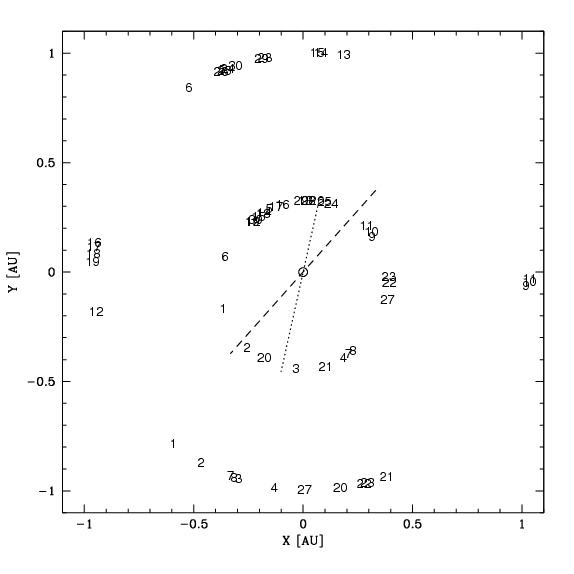Radar measurements of Mercury's obliquity and librations
Radar measurements of Mercury's obliquity and librations
Evidence for a global magnetic field at Mercury has raised perplexing
questions regarding the existence and nature of the planet's core.
The problems related to Mercury's core are of great interest because
of their implications on how planets evolve thermally and on how they
generate magnetic fields. Peale (1976) showed that the measurement of
four quantities, including the planet's obliquity and the amplitude of
its longitude librations, could place constraints on the size and
state of the core.
Our observations are designed to characterize Mercury's interior by
obtaining precise measurements of its rotational state. We illuminate
the planet with a radar signal and record the echoes at two distant
telescopes.
Roughly 30 measurements of the spin state of Mercury have been
obtained with the Goldstone and Green Bank Telescopes since May 2002.
Our measurements provide the first experimental proof that Mercury is
in a Cassini state, a three-order of magnitude improvement in the
knowledge of the spin orientation, and a compelling detection of the
longitude librations. Our libration data show that the core of
Mercury is molten.
Existing coverage

|
This diagram shows the positions of Earth and Mercury in the ecliptic
plane at the times of our measurements.
01: 2002 May 13
02: 2002 May 22
03: 2002 Jun 02
04: 2002 Jun 12
05: 2003 Jan 13
06: 2003 Jan 23
07: 2003 May 31
08: 2003 Jun 01
09: 2003 Sep 18
10: 2003 Sep 19
11: 2003 Sep 20
12: 2004 Mar 31
13: 2004 Dec 12
14: 2004 Dec 18
15: 2004 Dec 19
16: 2005 Mar 13
17: 2005 Mar 14
18: 2005 Mar 16
19: 2005 Mar 18
20: 2006 Jun 29
21: 2006 Jul 12
22: 2008 Jul 05
23: 2008 Jul 06
24: 2009 Jan 12
25: 2009 Jan 13
26: 2009 Jan 14
27: 2009 Jun 19
28: 2010 Jan 02
29: 2010 Jan 03
30: 2010 Jan 10
The dashed line is the line of nodes and the dotted line is the line
of apsides. Each measurement is particularly sensitive to rotations
of the spin vector about the line of sight. The best geometries for
future observations are those that are orthogonal to previous
observations. |
